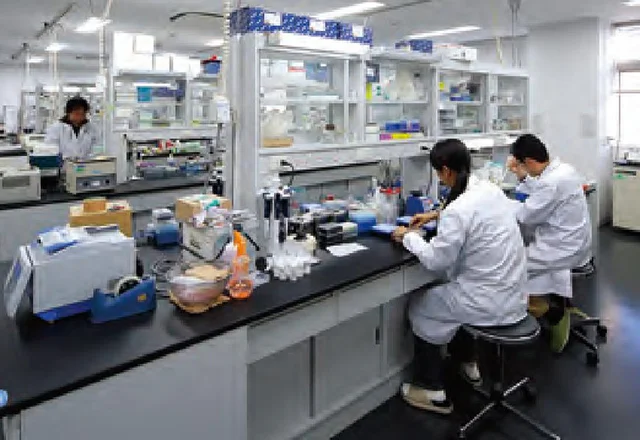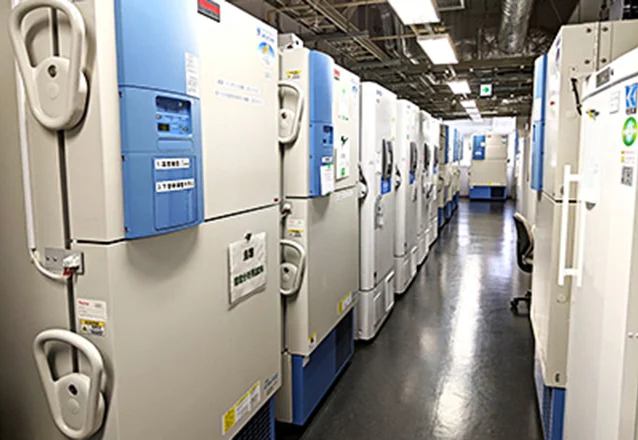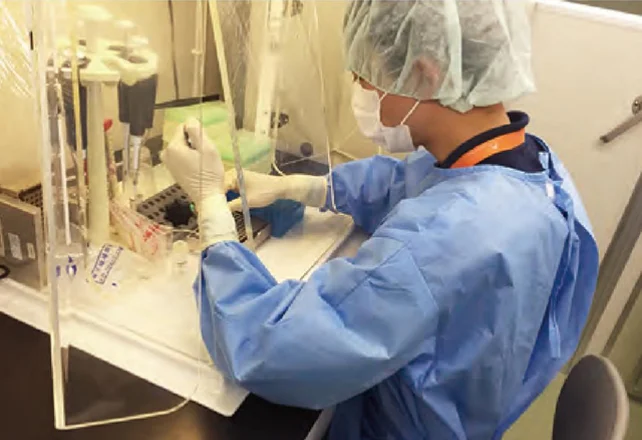Center for Molecular Biodiversity Research
Overview



The National Museum of Nature and Science houses over 4.3 million biological specimens, which consist largely of dried or fluid-preserved specimens that were historically collected and stored for the primary purpose of observing morphological characters. Current biodiversity research has increasingly relied on DNA sequence information; however, it is often challenging to extract DNA from specimens in historical collections due to degradation resulting from their long-term storage in a manner that did not consider the necessity of future research using DNA. The collection and preservation of specimens and samples from which DNA can be obtained has therefore become an important goal of the museum.
The Center for Molecular Biodiversity Research was established in July 2006 with the aim of further promoting biodiversity research in collaboration with the museum’s research departments. Our mission is to provide for the comprehensive collection and preservation of materials for DNA-based research, the management of DNA information, and the storage of voucher specimens from which DNA materials have been acquired.
Collection and Management of Specimen Materials
The Importance of Sample Preservation
Specimens utilized in scientific research must be preserved for long-term storage as “evidence” to ensure the credibility and reproducibility of research outcomes. For example, dried specimens and specimens immersed in preservation fluids that have been
examined for their morphology are stored in specimen repositories for enduring preservation as voucher specimens. Whereas scientifically important morphological specimens such as name-bearing type specimens are required to be stored in perpetuity, DNA
materials are often discarded once the DNA sequence information has been extracted, registered in public databases, and published in research papers. Even if a voucher specimen is retained, it can be challenging to obtain high-quality DNA from the same
specimen again if the it has been dried or treated with chemicals, so research findings often cannot be validated later using the same individual.
To address this issue, it is essential to preserve tissue and/or DNA samples used in DNA research as “voucher specimens” for the DNA sequence information. Thus, a pivotal mission of the Center for Molecular Biodiversity Research is to semi-permanently
preserve such samples to ensure the reproducibility of research outcomes.

Projects
Systematic Collection of Tissue and DNA Samples
The Center for Molecular Biodiversity Research collects tissue and DNA samples of various taxa with the aim of constructing a comprehensive collection of genetic samples spanning the diversity of life. The center promotes the collection and preservation of sets of tissue samples, DNA samples, DNA sequence information, and voucher specimens for each individual sample, each of which is an important resource for biodiversity research.
Intensive Acquisition of Tissue and DNA Samples
In order to enhance the availability of collections for DNA analysis, the center collaborates with researchers in the museum’s research departments to implement projects for the collection of tissue and DNA samples and corresponding voucher specimens by targeting different taxonomic groups each year.
Establishment of Storage Facilities for Tissue and DNA Samples
The center maintains a long-term storage system for tissue and DNA samples using approximately 30 ultra-low temperature freezers and is also responsible for the maintenance and management of these freezer facilities.

Development of DNA Research Facilities
The center manages other shared facilities that are used by researchers in the museum’s research departments, including DNA laboratories and sequencing facilities for experiments and analyses.

Staff
The Center for Molecular Biodiversity Research is composed of the Center Director, Deputy Center Director, Center Members affiliated with various research departments within the museum, and project-specific researchers.
| Director |
Tsuyoshi Hosoya |
| Deputy Director |
Utsugi Jinbo |
| Researchers |
Department of Zoology: Goro Tanifuji, Utsugi Jinbo (also Deputy Director)
Department of Botany: Kentaro Hosaka, Chie Tsutsumi Department of Paleontology and Anthropology: Hideaki Kanzawa |
| Assistant Researchers | Genki Ishiyama, Akito Ogawa, Kota Okamoto
|